Arthur Eddington
description: an English astrophysicist best known for his work on the theory of relativity and the Eddington limit, the natural limit to the luminosity of stars.
73 results
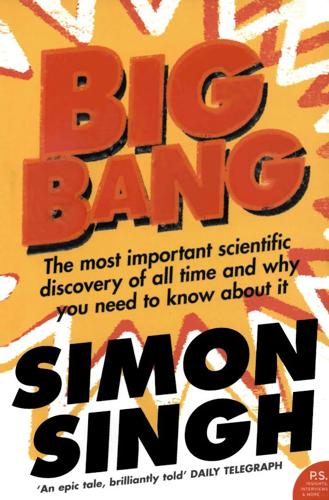
Big Bang
by
Simon Singh
Published 1 Jan 2004
Fred’s early fascination with astronomy was reinforced at the age of twelve when he read Arthur Eddington’s Stars and Atoms. Eventually Hoyle was persuaded to give the British education system a chance. He settled down at Bingley Grammar School and then embarked on a traditional academic path. In 1933 he won a scholarship to Emmanuel College, Cambridge, where he studied mathematics. He excelled and won the Mayhew Prize, which is given to the best student in applied mathematics. After graduation he earned a place as a Ph.D. student at Cambridge, working alongside such greats as Rudolf Peierls, Paul Dirac, Max Born and his hero, Arthur Eddington. After earning his doctorate in 1939 he was elected a fellow of St John’s College, and his research began to focus on the evolution of stars.
…
He continued to write papers while stuck in the trenches, including one on Einstein’s general theory of relativity which later led to an understanding of black holes. On 24 February 1916, Einstein presented the paper to the Prussian Academy. Just four months later, Schwarzschild was dead. He had contracted a fatal disease on the Eastern front. While Schwarzschild volunteered to fight, his counterpart at the Cambridge Observatory, Arthur Eddington, refused to enlist on principle. Raised as a devout Quaker, Eddington made his position clear: ‘My objection to war is based on religious grounds…Even if the abstention of conscientious objectors were to make the difference between victory and defeat, we cannot truly benefit the nation by wilful disobedience to the divine will.’
…
Nevertheless, Einstein once made a tongue-in-cheek comment when asked by a student how he would have reacted if God’s universe had turned out to behave differently from the way the general theory of relativity had predicted. In a wonderful demonstration of mock hubris, Einstein answered: ‘Then I would feel sorry for the Good Lord. The theory is correct anyway.’ Figure 28 Albert Einstein, who developed the theoretical framework of general relativity, and Sir Arthur Eddington, who proved it by observing the 1919 eclipse. This photograph was taken in 1930, when Einstein visited Cambridge to collect an honorary degree. Einstein’s Universe Newton’s theory of gravity is still widely used today to calculate everything from the flight of a tennis ball to the forces on a suspension bridge, from the swinging of a pendulum to the trajectory of a missile.
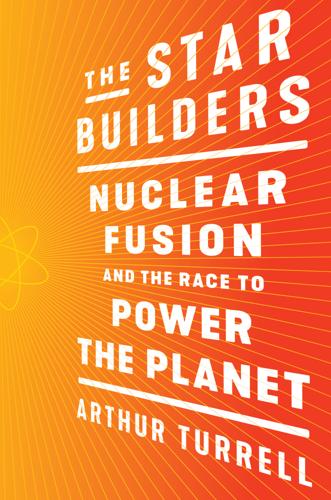
The Star Builders: Nuclear Fusion and the Race to Power the Planet
by
Arthur Turrell
Published 2 Aug 2021
And from there the path may open to powering the planet. CHAPTER 1 THE STAR BUILDERS “If, indeed, the sub-atomic energy in the stars is being freely used to maintain their great furnaces, it seems to bring a little nearer to fulfilment our dream of controlling this latent power for the well-being of the human race, or for its suicide.” —Arthur Eddington, “The Internal Constitution of the Stars,” 19201 Who are the fusion pioneers aiming, like Prometheus, to steal the secret of fire from the heavens? The individuals who are bold enough—some might say “crazy enough”—to try to bring star power to Earth? Throughout this book we’ll be meeting them and learning why they’ve dedicated their lives to the fusion dream.
…
CHAPTER 3 ENERGY FROM ATOMS “A star is drawing on some vast reservoir of energy by means unknown to us. This reservoir can scarcely be other than the sub-atomic energy which, it is known, exists abundantly in all matter; we sometimes dream that man will one day learn to release it and use it for his service. The store is well-nigh inexhaustible, if only it could be tapped.” —Arthur Eddington, “The Internal Constitution of the Stars,” 19201 This book is about scientists’ attempts to unlock energy from within the atom, and the star builders owe a great debt to the person who did more than anyone else to show the world this was possible. That person is the physicist Ernest Rutherford, who, in the first decades of the twentieth century, discovered the structure of the atom, carried out the first nuclear reaction (without realizing it), and led the teams that discovered both nuclear fusion and nuclear fission reactions.
…
That’s what you’d expect if you thought that protons and neutrons were like Lego blocks. Instead, the ratios were very slightly different: helium had a mass that was 99 percent of the mass of four hydrogens. This difference seems small and inconsequential, but it is the very reason why nuclear fusion works. The physicist and great popularizer of science Arthur Eddington was struck by this apparent mistake in the arithmetic of the universe. Eddington was a nuclear visionary, suggesting long before Rutherford’s fusion experiment that the power source of stars was subatomic in nature. Eddington reasoned that four hydrogen atoms should really have exactly the same mass as one helium atom, not 99 percent of the mass.
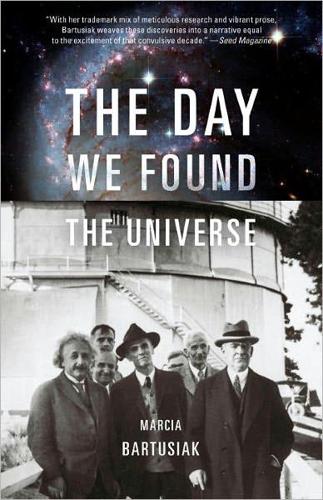
Day We Found the Universe
by
Marcia Bartusiak
Published 6 Apr 2009
By the 1910s the island-universe theory, dormant for many years, was slowly reemerging among a select group of scientists in both the United States and Europe. These astronomers were specifying that the spirals' sizes and the brightness of their novae only made sense if they were milky ways at great distance. The highly respected English astrophysicist Arthur Eddington was captivated by the vast breadth of this idea; it engaged his theoretical fantasies. “If the spiral nebulae are within the stellar system [the Milky Way], we have no notion what their nature may be. That hypothesis leads to a full stop,” he noted. “If, however, it is assumed that these nebulae are external to the stellar system, that they are in fact systems co-equal with our own, we have at least an hypothesis which can be followed up… [It] opens up to our imagination a truly magnificent vista of system beyond system … in which the great stellar system of hundreds of millions of stars (our galaxy)…would be an insignificant unit.”
…
The full-scale assault took place with paper number twelve, titled “Remarks on the Arrangement of the Sidereal Universe.” This particular article was not fully ready for submission to the Astrophysical Journal until April, in the waning days of World War I, but Shapley couldn't wait that long to spread the news. On January 8, 1918, he wrote the noted Arthur Eddington in England that “now, with startling suddenness and definiteness, [the cluster studies] seem to have elucidated the whole sidereal structure”—in other words, the architecture of the Milky Way. Not only were the globular clusters uniformly scattered around the center of the galaxy, with the Sun shoved off to the hinterlands, but the Milky Way was far larger than anyone had formerly presumed.
…
There was still the problem of the exceptionally bright novae seen earlier in the spiral nebulae. How do you explain that? asked Shapley. And then there were van Maanen's rotations to take into account. Not everyone was swayed by Shapley's worries; the most ardent believers in external galaxies still held fast to their convictions—not only Curtis but also such major players as Arthur Eddington, W. W. Campbell, and V. M. Slipher. It was the undecideds who were most affected by Shapley's arguments and so remained huddled on the fence. What resulted were two completely different views of the universe, which were difficult to reconcile. The writer MacPherson poetically put it this way: “We may compare our galactic system to a continent surrounded on all sides by the ocean of space, and the globular clusters to small islands lying at varying distances from its shores; while the spiral nebulae would appear to be either smaller islands, or else independent ‘continents’ shining dimly out of Immensity.”
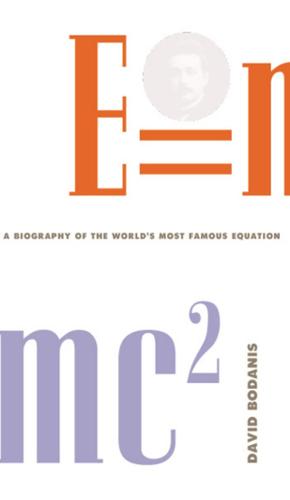
E=mc2: A Biography of the World's Most Famous Equation
by
David Bodanis
Published 25 May 2009
He was cruel to her at lectures, trying to get all the male students to laugh at this one female in their midst. It didn’t stop her from going—she could hold her own with his best students in tutorials— but even forty years later, retired from her professorship at Harvard, she remembered the rows of braying young men, nervously trying to do what their teacher expected of them. But Arthur Eddington, a quiet Quaker, was also at the university, and he was happy to take her on as a tutorial student. Although his reserve never lifted—tea with students was generally in the presence of his elderly unmarried sister—the twenty-year-old Payne picked up Eddington’s barely stated awe at the potential power of pure thought.
…
There were no obstacles to a German national traveling now! It’s not recorded what Freundlich felt as the great expedition set out, but we know exactly where he was when the results came through. He read it in the newspaper, back in Berlin. He hadn’t been invited along. In fact, it was a cool Englishman we’ve already met who led the team. Arthur Eddington wore small metalrimmed glasses, was medium height and barely medium weight, and spoke in sentences that tapered off whenever he had to pause for thought, which was fairly often. This of course meant in the good English manner that under his meek exterior there beat a soul of wild determination.
…
Eddington signed the letter, since that was only fair to his friends, but then he also added a postscript, explaining to the Home Office that if he wasn’t deferred on grounds of scientific usefulness, he’d still ask to be deferred as a conscientious objector. The Home Office was not impressed, and began proceedings to send him to one of the prisons. What Else Einstein Did Arthur Eddington aip emilio segrè visual archives This is the point at which the Astronomer Royal, Frank Dyson, called attention to the remarkable eclipse opportunity. If Dyson could get Eddington to arrange the expedition, could Eddington still be deferred, despite that postscript? Dyson’s work was relevant to navigation, and so he was close to the admiralty.
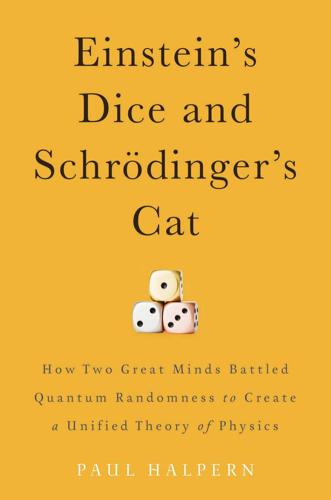
Einstein's Dice and Schrödinger's Cat: How Two Great Minds Battled Quantum Randomness to Create a Unified Theory of Physics
by
Paul Halpern
Published 13 Apr 2015
It was forced to cede some of its territory, limit the size of its army, and pay extensive reparations—leading to much resentment and economic depression that would contribute to the rise of the Nazis. During the war, Einstein had little chance to test his hypothesis about the gravitational bending of starlight by the Sun. Finlay-Freundlich’s inability to complete his expedition was a great disappointment to him. Einstein quietly began to correspond with a British astronomer, Arthur Eddington, who was keenly interested in verifying Einstein’s theory. According to several widely reported stories, Eddington was known at the time as one of the few people who truly understood general relativity.14 A Quaker and a pacifist, Eddington, like Einstein, was opposed to the war and in favor of international scientific cooperation.
…
These seemingly innocuous clauses provided a Trojan horse for Hitler to include his supporters in the Austrian leadership and begin to exert pressure from within for subjugation. Schrödinger started his Graz professorship in October of that year. Once again he tried to ignore politics, focusing on his research. He had become intrigued by recent proposals by Arthur Eddington for uniting quantum physics with general relativity and explaining uncertainty through cosmological arguments. Thus in the midst of Austria’s turmoil, his gaze was fixed on his equations. The Quantum and the Cosmos Eddington’s role in the late 1910s and early 1920s as a leading defender, interpreter, and tester of general relativity had won him much respect in the physics community.
…
Freund, Peter, A Passion for Discovery (Hackensack, NJ: World Scientific, 2007). 237 Further Reading Gefter, Amanda, Trespassing on Einstein’s Lawn: A Father, a Daughter, the Meaning of Nothing, and the Beginning of Everything (New York: Bantam, 2014). Goenner, Hubert, “Unified Field Theories: From Eddington and Einstein up to Now,” in Proceedings of the Sir Arthur Eddington Centenary Symposium, edited by V. de Sabbata and T. M. Karade, 1:176–196 (Singapore: World Scientific, 1984). Greene, Brian, Fabric of the Cosmos: Space, Time and the Texture of Reality (New York: Vintage, 2005). Gribbin, John, Erwin Schrödinger and the Quantum Revolution (Hoboken, NJ: Wiley, 2013). ———, In Search of Schrödinger’s Cat: Quantum Physics and Reality (New York: Bantam, 1984). ———, Schrödinger’s Kittens and the Search for Reality: Solving the Quantum Mysteries (New York: Little, Brown, 1995).
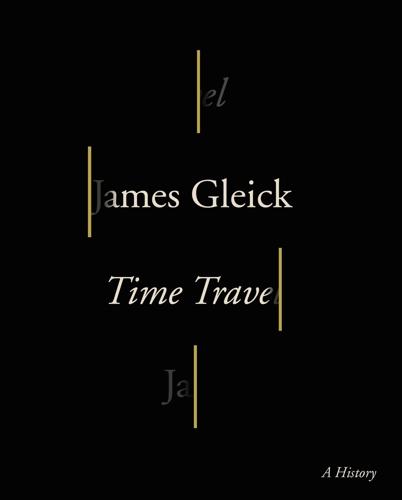
Time Travel: A History
by
James Gleick
Published 26 Sep 2016
*2 “There is some sense, easier to feel than to state, in which time is an unimportant and superficial characteristic of reality.” SIX * * * Arrow of Time The great thing about time is that it goes on. But this is an aspect of it which the physicist sometimes seems inclined to neglect. —Arthur Eddington (1927) WE ARE FREE to leap about in time—all this hard-won expertise must be good for something—but let’s just set the clock to 1941 again. Two young Princeton physicists make an appointment to call at the white clapboard house at 112 Mercer Street, where they are led into Professor Einstein’s study.
…
— THERE’S A CATCHPHRASE, the arrow of time, familiarly used by scientists and philosophers in many languages (la flèche du temps, Zeitpfeil, zamanın oku, ось времени) as shorthand for a complex fact that everyone knows: time has a direction. The phrase spread widely in the 1940s and 1950s. It came from the pen of Arthur Eddington, the British astrophysicist who first championed Einstein. In a series of lectures at the University of Edinburgh in the winter of 1927 Eddington was attempting to comprehend the great changes under way in the nature of scientific thought. The next year he published his lectures as a popular book, The Nature of the Physical World.
…
Jimena Canales, The Physicist and the Philosopher, 2015. Sean Carroll, From Eternity to Here, 2010. Istvan Csicsery-Ronay, Jr., The Seven Beauties of Science Fiction, 2008. Paul Davies, About Time, 1995. How to Build a Time Machine, 2001. John William Dunne, An Experiment with Time, 1927. Arthur Eddington, The Nature of the Physical World, 1928. J. T. Fraser, ed., The Voices of Time, 1966, 1981. Peter Galison, Einstein’s Clocks, Poincaré’s Maps: Empires of Time, 2004. J. Alexander Gunn, The Problem of Time, 1929. Claudia Hammond, Time Warped, 2013. Diane Owen Hughes and Thomas R. Trautmann, eds., Time: Histories and Ethnologies, 1995.
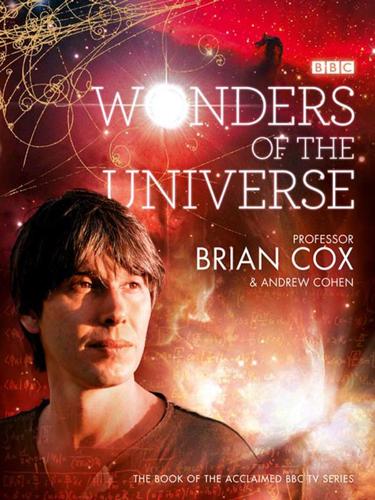
Wonders of the Universe
by
Brian Cox
and
Andrew Cohen
Published 12 Jul 2011
Vulcan was supposedly first sighted by amateur astronomer Lescarbault on 26 March 1859, but further observations were inconclusive and Vulcan was later proved to be a ghost planet. SCIENCE PHOTO LIBRARY EINSTEIN’S THEORY OF GENERAL RELATIVITY German-born physicist Albert Einstein (left) created the famous Theory of General Relativity. British astrophysicist Sir Arthur Eddington (right), later put this theory to the test and confirmed its accuracy. ROYAL ASTRONOMICAL SOCIETY / SCIENCE PHOTO LIBRARY Einstein would have loved the Vomit Comet. The fact that the effects of gravity can be completely removed by falling freely in a gravitational field was, for him, the thought experiment that led to his theory of General Relativity.
…
We do, however, have a scientific explanation for why such a dramatic reversal never happens; we call it the ‘arrow of time’. * * * We expect to see ice fall from the glacier, splash into the water and create waves. If it happened in any other way we’d immediately know there was something wrong. * * * This phrase was first used by the British physicist Sir Arthur Eddington in the early twentieth century to describe this deceptively simple and yet profound quality of our universe: it always seems to run in a particular direction. Eddington was instrumental in bringing Einstein’s theory of relativity to the English-speaking world during the First World War, and also one of the first scientists to directly confirm the findings of relativity when he led an expedition to observe the total solar eclipse on 29 May 1919.
…
Clausius’s statement of the second law does not at first sight sound as if it has profound implications for the future of our universe. He simply stated that ‘No process is possible whose sole result is the transfer of heat from a body of lower temperature to a body of higher temperature’. This simple proposition occupies such a profound position in modern science that Arthur Eddington said of the second law: ‘If someone points out to you that your pet theory of the Universe is in disagreement with Maxwell’s equations, then so much the worse for Maxwell’s equations. If it is found to be contradicted by observation, well, these experimentalists do bungle things sometimes. But if your theory is found to be against the Second Law of Thermodynamics I can give you no hope; there is nothing for it but to collapse in deepest humiliation.’
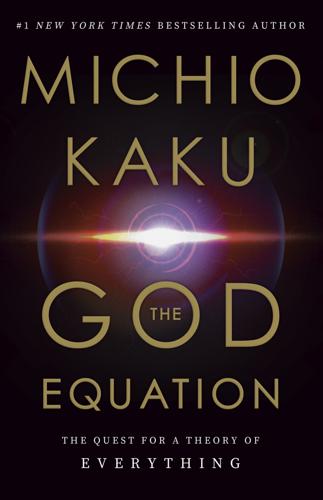
The God Equation: The Quest for a Theory of Everything
by
Michio Kaku
Published 5 Apr 2021
When he was asked what he would think if the experiment disproved his theory, he said that God must have made a mistake. He was convinced he was correct, he wrote to his colleagues, because it had superb mathematical beauty and symmetry. When this epic experiment was finally performed by astronomer Arthur Eddington, there was remarkable agreement between Einstein’s prediction and the actual result. (Today, the bending of starlight due to gravity is routinely used by astronomers. When starlight passes near a distant galaxy, light is bent, giving the appearance of a lens bending the light. These are called gravity lenses or Einstein lenses.)
…
What is remarkable is that, to the astronauts in the ship, everything seems to be normal as they pass through the event horizon—normal, that is, until they are torn apart. This concept was so bizarre that, for many decades, it was considered science fiction, a strange by-product of Einstein’s equations that didn’t exist in the real world. Astronomer Arthur Eddington once wrote that “there should be a law of Nature to prevent a star from behaving in this absurd way!” Einstein even wrote a paper arguing that, under normal conditions, black holes could never form. In 1939, he showed that a whirling ball of gas could never be compressed by gravity to within the event horizon.
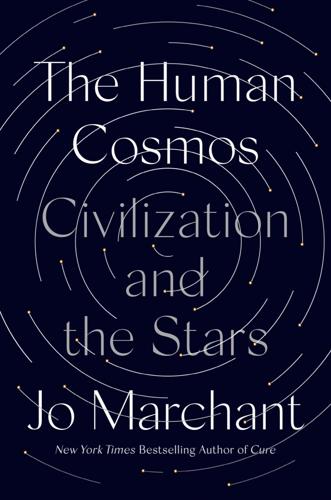
The Human Cosmos: A Secret History of the Stars
by
Jo Marchant
Published 15 Jan 2020
The section is called Eclipses, and it was written just as British astronomers traveled to Sobral in Brazil, and the island of Principe, West Africa, to observe a real-life solar eclipse predicted for May 29, 1919. Their mission was to measure the deflection of starlight during the eclipse, a problem that lead scientist Arthur Eddington described as “weighing light.” No wonder surrealist Breton was fascinated. Now it was the scientists’ turn to leave behind the comforts of common sense, and journey into territory that was strange beyond their wildest dreams. Classical physics describes a universe in which objects exist and events occur within a fixed, absolute grid of time and space.
…
Even philosopher Bertrand Russell—champion of logic and science—pointed out in the 1920s that physics can only reveal the behavior of matter, not its intrinsic nature (including whether this involves consciousness). “Physics is mathematical not because we know so much about the physical world, but because we know so little,” he said, “it is only its mathematical properties that we can discover.” Arthur Eddington, whose 1919 eclipse observations confirmed Einstein’s theory of relativity, built on Russell’s argument in 1928. In fact, he pointed out, there’s one case where we do know matter from the inside: our own brains, which are, of course, aware. Isn’t the simplest assumption that the rest of matter is of a similar nature?
…
., “A Determination of the Deflection of Light by the Sun’s Gravitational Field, from Observations Made at the Total Eclipse of May 29, 1919,” Philosophical Transactions of the Royal Society A 220 (1920): 291–333; Malcolm Longair, “Bending Space-time: A Commentary on Dyson, Eddington and Davidson (1920) ‘A Determination of the Deflection of Light by the Sun’s Gravitational Field,’” Philosophical Transactions of the Royal Society A 373 (2015): 20140287; Peter Coles, “Einstein, Eddington and the 1919 Eclipse,” in Historical Development of Modern Cosmology, ASP Conference Proceedings 252 (2001): 21. “weighing light”: Arthur Eddington, “The Total Eclipse of 1919 May 29 and the Influence of Gravitation on Light,” The Observatory 42 (1919): 121. He presented his theory: Longair, “Bending Space-time.” The data was ambiguous: Ben Almassi, “Trust in Expert Testimony: Eddington’s 1919 Eclipse Expedition and the British Response to General Relativity,” Studies in History and Philosophy of Modern Physics 40 (2009): 57–67; Coles, “Einstein, Eddington and the 1919 Eclipse.”
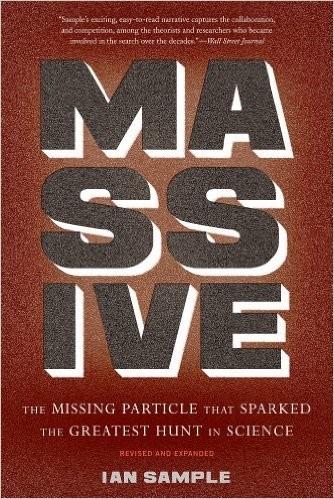
Massive: The Missing Particle That Sparked the Greatest Hunt in Science
by
Ian Sample
Published 1 Jan 2010
Later that year, before LEP switched on, the British prime minister, Margaret Thatcher, gave a speech at the Royal Society in London, the most prestigious scientific organization in the country. She spoke wistfully of Arthur Eddington, whose stories Peter Higgs had read as a schoolboy. Eddington had chosen the Royal Society as the venue in which to describe his 1919 expedition to the west coast of Africa to prove Einstein right by watching starlight bend around the sun. “When Arthur Eddington presented his results to this society in 1919 . . . it made headlines,” Thatcher said. “Many people could not get into the meeting, so anxious were the crowds to find out whether the intellectual paradox of curved space had really been demonstrated.
…
The man leading the assembly was about to retire when Higgs arrived, but he had been the new headmaster when Dirac was in his last year as a pupil at the school. Higgs was fascinated by Dirac, and it was he, more than any of the other founding fathers of quantum mechanics, who ignited Higgs’s passion for physics. His English teacher urged him to read about science outside the classroom, especially the popular books by the Cambridge physicist Arthur Eddington, the cosmologist James Jeans, and Albert Einstein. One of Eddington’s tales had unfolded on May 29, 1919, ten years to the day before Higgs was born.19 Eddington had cooked up a brilliant plan. He realized that nature provided a way of testing Einstein’s theory of general relativity, which said massive objects created gravity by curving space around them.

Unweaving the Rainbow
by
Richard Dawkins
Published 7 Aug 2011
from 'Remembering Richard Feynman', The Skeptical Inquirer (1988) Newton's dissection of the rainbow into light of different wavelengths led on to Maxwell's theory of electromagnetism and thence to Einstein's theory of special relativity. If you think the rainbow has poetic mystery, you should try relativity. Einstein himself openly made aesthetic judgements in science, and perhaps went too far. 'The most beautiful thing we can experience,' he said, 'is the mysterious. It is the source of all true art and science.' Sir Arthur Eddington, whose own scientific writings were noted for poetic flair, used the solar eclipse of 1919 to test General Relativity and returned from Principe Island to announce, in Banesh Hoffmann's phrase, that Germany was host to the greatest scientist of the age. I read those words with a catch in the throat, but Einstein himself took the triumph in his stride.
…
There may be some who feel that the truth should always out, however painful, but I think a good case could be made that the sum total of human happiness would not be enhanced by a sudden outburst of revelations about everybody's true paternity. Then there are the medical and insurance issues. The whole life insurance business depends upon the inability to forecast exactly when somebody will die. As Sir Arthur Eddington said: 'Human life is proverbially uncertain; few things are more certain than the solvency of a life-insurance company.' We all pay our premiums. Those of us who die later than expected subsidize (the heirs of) those who die earlier than expected. Insurance companies already make statistical guesses which partially subvert the system by enabling them to charge high-risk clients larger premiums.
…
Moving to the far end of our spectrum of putative miracles, are there any speculations or allegations that we can utterly, and for all time, rule out? Physicists agree that if an inventor applies for a patent for a perpetual motion machine you can safely turn down his patent without even looking at his design. This is because any perpetual motion machine would violate the laws of thermodynamics. Sir Arthur Eddington wrote: If someone points out to you that your pet theory of the universe is in disagreement with Maxwell's equations—then so much the worse for Maxwell's equations. If it is found to be contradicted by observation—well, these experimentalists do bungle things sometimes. But if your theory is found to be against the second law of thermodynamics I can give you no hope; there is nothing for it but to collapse in deepest humiliation.
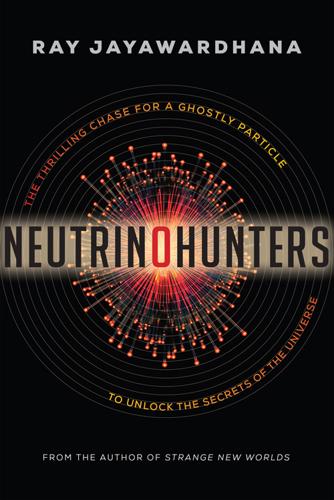
Neutrino Hunters: The Thrilling Chase for a Ghostly Particle to Unlock the Secrets of the Universe
by
Ray Jayawardhana
Published 10 Dec 2013
Barely two years later, he seemed to have had a change of heart, dismissing the neutrino as an “unobservable particle.” By the end of the 1930s, other scientists shared Dirac’s doubts about Pauli’s neutrino hypothesis. The British astrophysicist, expositor of relativity theory, and science popularizer Arthur Eddington reflected the skepticism of the time when he noted in his book The Philosophy of Physical Science: “Just now nuclear physicists are writing a great deal about hypothetical particles called neutrinos supposed to account for certain peculiar facts observed in beta-ray disintegration … I am not much impressed by the neutrino theory.
…
Now that Reines and Cowan had confirmed these particles as real, Davis turned his attention to chasing neutrinos created inside the Sun rather than those produced in man-made reactors on Earth. Davis was aware that neutrinos should be an essential byproduct of how the Sun generates energy, thanks to astrophysicists who had figured out the Sun’s inner workings in the preceding decades. The first crucial insight on solar energy production came in 1920 from the British astronomer Arthur Eddington, who suggested that nuclear reactions are responsible. One of Eddington’s Cambridge colleagues had found that a helium atom is slightly less massive than four hydrogen atoms combined. Eddington proposed that as four hydrogen nuclei fuse to make one helium nucleus in the Sun’s core, the small mass difference would be converted into energy, according to Einstein’s equation E=mc2.
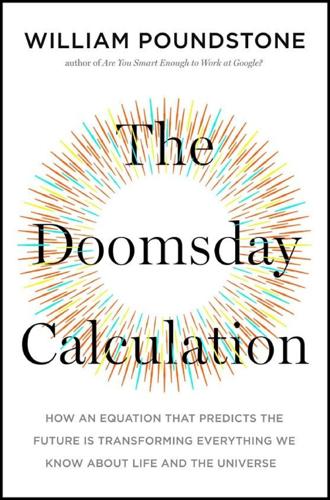
The Doomsday Calculation: How an Equation That Predicts the Future Is Transforming Everything We Know About Life and the Universe
by
William Poundstone
Published 3 Jun 2019
It’s natural to assume that people, objects, and events that we can observe are typical of those we can’t. That is the premise of opinion polls, which hold that a handful of randomly selected people can speak for a whole nation. But there are many ways for polls to be skewed and for observations to be distorted by selection effects. British physicist Arthur Eddington gave a classic example in his 1939 book, The Philosophy of Physical Science. Wanting to know the size of the smallest fish in a pond, you get a net and scoop up a hundred random fish, measuring each carefully. The smallest fish of the hundred is six inches long. It is easy to jump to the conclusion that fish smaller than six inches are rare or nonexistent.
…
That would mean no stars, no planets, no life, and no Richard Feynmans to contemplate it all. The fine-structure constant remains a mystery, though, because our physical theories have so far been unable to account for its value. This seems to cry out for an explanation. Several twentieth-century thinkers sacrificed their reputations on that altar, most notoriously Arthur Eddington. In spirit Eddington was a Pythagorean, a man who preferred to believe the world sings the unheard music of whole numbers. Eddington claimed that the fine-structure constant was exactly 1/136. He supplied an elaborate rationale that mystified all who read it. Unfortunately for Eddington, the constant is much closer to 1/137.
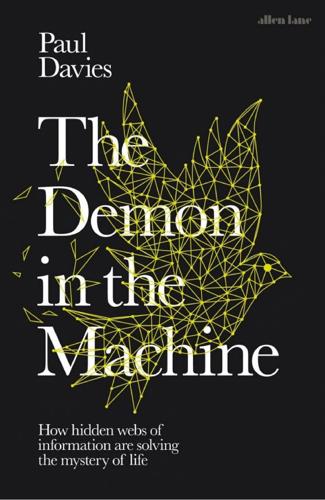
The Demon in the Machine: How Hidden Webs of Information Are Finally Solving the Mystery of Life
by
Paul Davies
Published 31 Jan 2019
ENTER THE DEMON fn1 I’m ignoring here the mass-energy of matter, which is mostly inert, and the mysterious dark energy of empty space. They are far more abundant. fn2 The first law of thermodynamics is just the law of conservation of energy when heat is included as a form of energy. fn3 The great British astronomer Sir Arthur Eddington once wrote: ‘The law that entropy always increases, holds, I think, the supreme position among the laws of Nature. If someone points out to you that your pet theory of the universe is in disagreement with Maxwell’s [electromagnetic field] equations – then so much the worse for Maxwell’s equations.
…
If someone points out to you that your pet theory of the universe is in disagreement with Maxwell’s [electromagnetic field] equations – then so much the worse for Maxwell’s equations. If it is found to be contradicted by observation – well, these experimentalists do bungle things sometimes. But if your theory is found to be against the second law of thermodynamics I can give you no hope; there is nothing for it but to collapse in deepest humiliation.’ (Arthur Eddington, The Nature of the Physical World (Cambridge University Press, 1928), p. 74) fn4 Maxwell assumed that the demon and the shutter are perfectly functioning devices with no friction or need for a power source. This is admittedly an idealization, but there is no known principle preventing an arbitrarily close approach to such mechanical perfection.

Lost in Math: How Beauty Leads Physics Astray
by
Sabine Hossenfelder
Published 11 Jun 2018
In 1930, however, Arthur Eddington, who had been instrumental in organizing the first experimental test of general relativity, showed that Einstein’s solution with the cosmological constant is unstable: even the smallest shift in matter distribution would make it collapse or expand. This instability, together with observations by Edwin Hubble that supported Lemaître’s idea, led Einstein in 1931 to also adopt the expanding universe. Still, for many decades after this, cosmology remained starved of data and offered a playground for philosophical and aesthetic debate. Arthur Eddington in particular held on to Einstein’s static universe because he believed the cosmological constant represented a new force of nature.
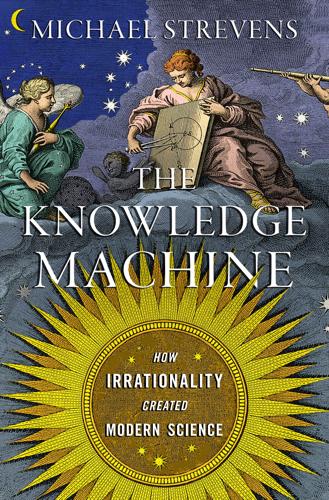
The Knowledge Machine: How Irrationality Created Modern Science
by
Michael Strevens
Published 12 Oct 2020
It was a crucial experiment in the Popperian mold. Measure the apparent shift in the stars’ positions, and in the cold light of that number at most one theory could survive—either Einstein’s or Newton’s—or, if both predictions turned out to be wrong, neither. Six months after the eclipse, the expedition leader Arthur Eddington announced the results: Newton was dethroned and Einstein was declared the new emperor of gravitation. The Great War was finally over, and Einstein’s esoteric German physics had been confirmed by Eddington’s exacting British experiment, a scientific triumph that was heard around the world—by a young Karl Popper among others—and that heralded an era of international cooperation, progress, and peace.
…
In his own eyes, he was reasoning his way toward truth, but the plausibility rankings that went into his reasoning—in particular, his estimate of the probability of a systematic Brazilian astrographic breakdown—were twisted by his hopes and expectations for what that truth might be. Figure 7.2. Albert Einstein and Arthur Eddington enjoy a quiet moment together at the University of Cambridge Observatory in 1930. All this is, of course, just to repeat and to underscore the lesson learned from the collapse of the Great Method Debate: scientific reasoning is inflected always and everywhere with subjectivity. There is no place, apparently, for what the iron rule demands, an argument that is purely objective.

The Last Stargazers: The Enduring Story of Astronomy's Vanishing Explorers
by
Emily Levesque
Published 3 Aug 2020
The most scientifically famous eclipse observation is undoubtedly Arthur Eddington’s expedition in 1919 to test Albert Einstein’s theory of general relativity. According to Einstein, the sun should “lens” background stars as it passes in front of them, bending their light thanks to the effects of the sun’s gravity on space-time and causing them to appear at a slightly different place in the sky. The problem with testing this theory is that normally, the sun is so bright, it outshines the light of all the other stars in the sky. An eclipse would solve this, handily blocking the sun and allowing Arthur Eddington to measure the position of nearby stars.

The Grand Design
by
Stephen Hawking
and
Leonard Mlodinow
Published 14 Jun 2010
For example, we don’t mean the universe is expanding in the manner that, say, one might expand one’s house, by knocking out a wall and positioning a new bathroom where once there stood a majestic oak. Rather than space extending itself, it is the distance between any two points within the universe that is growing. That idea emerged in the 1930s amid much controversy, but one of the best ways to visualize it is still a metaphor enunciated in 1931 by Cambridge University astronomer Arthur Eddington. Eddington visualized the universe as the surface of an expanding balloon, and all the galaxies as points on that surface. This picture clearly illustrates why far galaxies recede more quickly than nearby ones. For example, if the radius of the balloon doubled each hour, then the distance between any two galaxies on the balloon would double each hour.

The Music of the Primes
by
Marcus Du Sautoy
Published 26 Apr 2004
In this two-dimensional geometry there are no parallel lines of longitude since they all meet at the poles. No one had contemplated the idea that three-dimensional space might also bend. We realise now that Gauss was working on too small a scale to observe any significant bending of space to counter the view of a Euclidean world. Arthur Eddington’s confirmation of the bending of light from stars during the solar eclipse of 1919 supported Gauss’s hunch. Gauss never went public with his ideas, perhaps because his new geometries seemed to be at variance with the task of mathematics, which was to represent physical reality. The friends he did mention his idea to, Gauss pledged to secrecy.
…
Also at Trinity, working alongside Hardy and Littlewood, were the two most eminent philosophers active in England: Bertrand Russell and Ludwig Wittgenstein. Both were wrestling with the same foundational problems of mathematics that had so concerned Hilbert. And Cambridge was buzzing with new breakthroughs in physics made by the likes of J. J. Thomson, who was awarded a Nobel prize for his discovery of the electron, and Arthur Eddington, who had confirmed Gauss and Einstein’s belief that space was indeed curved and non-Euclidean. The great collaboration between Hardy and Littlewood was fuelled by the timely arrival from Göttingen of a book by Landau about prime numbers. The publication in 1909 of his two-volume work Handbuch der Lehre von der Verteilung der Primzahlen (‘Handbook of the Theory of the Distribution of Prime Numbers’) proselytised the wonders of the connections between primes and the Riemann zeta function.
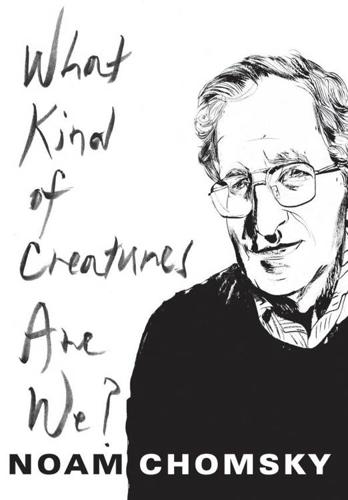
What Kind of Creatures Are We? (Columbia Themes in Philosophy)
by
Noam Chomsky
Published 7 Dec 2015
For science to be informative, it cannot be restricted to structural knowledge of such logical properties. Rather, “the world of physics [that we construct] must be, in some sense, continuous with the world of our perceptions, since it is the latter which supplies the evidence for the laws of physics.” The percepts that are required for this task—perhaps just meter-readings, Arthur Eddington had argued shortly before—“are not known to have any intrinsic character which physical events cannot have, since we do not know of any intrinsic character which could be incompatible with the logical properties that physics assigns to physical events.” Accordingly, “what are called ‘mental’ events… are part of the material of the physical world.”

Intertwingled: Information Changes Everything
by
Peter Morville
Published 14 May 2014
What do exist are physical stimuli. Human beings classify and name those different stimuli as different objects.cxliv Yanofsky argues that we may learn more from looking at the way we are observing the universe than from the observation itself. To illustrate, he recalls a thought experiment of the philosopher-scientist Arthur Eddington. Suppose that an ichthyologist is exploring the life of the ocean. He casts a net into the water and brings up a fishy assortment. Surveying his catch, he proceeds in the usual manner of a scientist to systematize what it reveals. He arrives at two generalizations: 1) No sea-creature is less than two inches long. 2) All sea-creatures have gills. cxlv The catch stands for our scientific body of knowledge and the net for the sensory and cognitive apparatus used to obtain it.

Infinity in the Palm of Your Hand: Fifty Wonders That Reveal an Extraordinary Universe
by
Marcus Chown
Published 22 Apr 2019
—SARAH LOTZ1 ACROSS THE WORLD, TELEGRAPH operators were electrocuted and, at low latitudes, a blood-red aurora borealis appeared, so bright a newspaper could be read by it at midnight.2 The Carrington event, named after amateur astronomer Richard Carrington, who from south of London noticed a flare on the sun at the same time that a magnetometer at Kew flew off-scale, changed forever our ideas about the sun.3 Before September 1, 1859, our local star was believed to influence the earth only through its gravity and of course the warming effect of sunlight. Afterwards, it was realized that violent convulsions on the solar surface, or photosphere, could fire magnetic missiles at our planet with devastating effects. In the 1920s, the British astrophysicist Sir Arthur Eddington deduced the internal structure of the sun and its central temperature of more than ten million degrees merely by assuming that it is a giant ball of gas. The key to this was his recognition that, because the sun is not noticeably expanding or contracting, every portion of its interior must be in perfect balance.
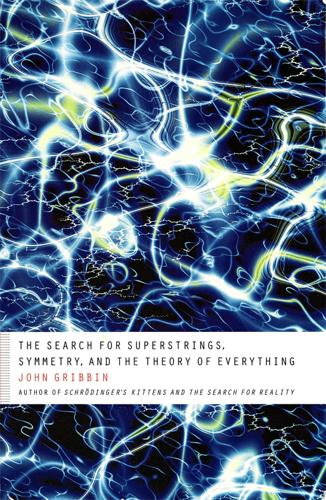
The Search for Superstrings, Symmetry, and the Theory of Everything
by
John Gribbin
Published 29 Nov 2009
The Many Dimensions of Reality Early in 1919, Theodor Kaluza, a junior scholar at the University of Königsberg in Germany, 3 was sitting at his desk in his study, working on the implications of the new General Theory of Relativity, which Einstein had first presented four years before and which was about to be confirmed, in spectacular fashion, by Arthur Eddington's observations of light bending during total eclipse of the Sun. As usual, Kaluza's son, Theodor junior, aged nine, was sitting quietly on the floor of the study, playing his own games. Suddenly, Kaluza senior stopped work. He sat still for several seconds, staring at the papers, covered with equations, that he had been working on.
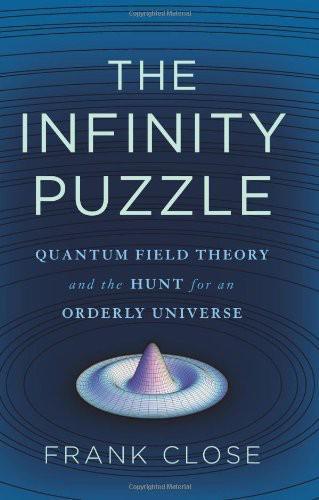
The Infinity Puzzle
by
Frank Close
Published 29 Nov 2011
Experiments have determined its value to be 0.00728, which seems unremarkable until you notice that 1 divided by this number is almost exactly an integer: 137. Almost immediately following that discovery, this number took on a sense of mystery, which has fascinated physicists ever since. In 137, apparently, science had found nature’s PIN code. In Cambridge, England, in the 1930s, astronomer Sir Arthur Eddington, seduced by this numerology, inspired a Pythagorean cult.23 There have been spoofs connecting 137 to the biblical book of Revelation;24 one of the fathers of Quantum Electrodynamics—Julian Schwinger—had 137 as the vanity license plate on his sports car;25 and eighty years on, many of us continue to receive unsolicited papers from people who believe that they have found the true path to enlightenment with an explanation of this number.
…
It thereby connects the dynamics of electrically charged particles in a profound way with the great theories of the twentieth century—Special Relativity (viac) and Quantum Theory (viah). The tantalizing feature is that the particular combination of these quantities, alpha, is simply a number. 23. Arthur Eddington had built a set of sixteen equations, involving fundamental constants, with which he hoped to construct a theory of the universe. He then claimed that alpha followed from (16 × 16 – 16)/2 + 16, which equals 136. When the data settled on its value nearer to 137, Eddington announced that he had forgotten to include alpha itself in his formula, so added 1 to 136.

The Strangest Man: The Hidden Life of Paul Dirac, Mystic of the Atom
by
Graham Farmelo
Published 24 Aug 2009
The pages of the newspapers and magazines were replete with advertisements for scores of half-baked accounts of Einstein’s work churned out only months after the theory came to public attention.28 At that time, there were no science journalists, so Dirac and his friend Wiltshire had to rely on popular articles written by scientists, notably Arthur Eddington, the Quaker astronomer and mathematician at the University of Cambridge and the only person in Britain to have mastered the theory. He had even got his hands dirty in one of the eclipse expeditions that produced crucial support for the theory. In a stream of entertaining articles and books, Eddington deployed witty, down-to-earth analogies that made even the most complex abstract ideas accessible and arresting.
…
Pausing only to eat his packed lunch, he looked every inch the city gent inspecting the local countryside: to the north, there was the winding valley of the river Great Ouse and to the east, the geometrical network of fenland drains and Tudor-style buildings with their Dutch gables.15 He would return in time for dinner at St John’s and then walk back to his digs through the foggy backstreets of Cambridge, most of them unlit. On Monday morning, he was ready for another six days’ uninterrupted study. Dirac’s reserve did not prevent him from meeting many of the country’s most famous scientists soon after he arrived. Among them was the man who had introduced him to the technicalities of relativity theory, Arthur Eddington. He was a young-looking forty-year-old, always neatly dressed in his three-piece suit, the knot of his dark tie poised just below the top button of his starched shirt. For someone so eminent, he was surprisingly lacking in confidence – he often sat with his arms crossed defensively, weighing his words carefully.
…
Dirac was learning the branches of mathematics known as group theory and differential geometry. 57 Interview with Oppenheimer, AHQP, 20 November 1963, p. 1. 58 Letter to Dirac from his mother, 9 October 1931, Dirac Papers, 2/2/4 (FSU). 59 Letter to Dirac from his mother, dated 28/31 September 1931, Dirac Papers, 2/2/4 (FSU). 60 Letter to Dirac from his mother, 22 December 1931, Dirac Papers, 2/2/4 (FSU). 61 Brown (1997: Chapter 6). 62 Cathcart (2004: 210–12); Chadwick (1984: 42–5). 63 Brown (1997: 106). Sixteen I hope it will not shock experimental physicists too much if I say that we do not accept their observations unless they are confirmed by theory. SIR ARTHUR EDDINGTON, 11 September 19331 The character of Paul Dirac first appeared on stage in a special version of Faust, the Hamlet of German literature. Goethe’s drama is the literary antithesis of Agatha Christie’s penny-plain narratives that Dirac wolfed down in the evenings. He had no taste for epic plays, but he will have been absorbed in this Faust, a forty-minute musical parody of the twenty-one-hour play, written as a physicists’ entertainment.2 The authors, the cast and the audience were the physicists at Bohr’s spring meeting in April 1932, and Dirac was there.
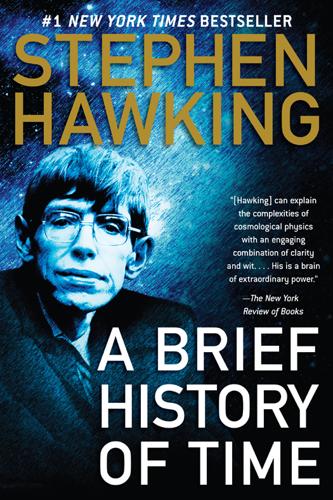
A Brief History of Time
by
Stephen Hawking
Published 16 Aug 2011
Our sun has probably got enough fuel for another five thousand million years or so, but more massive stars can use up their fuel in as little as one hundred million years, much less than the age of the universe. When a star runs out of fuel, it starts to cool off and so to contract. What might happen to it then was first understood only at the end of the 1920s. In 1928 an Indian graduate student, Subrahmanyan Chandrasekhar, set sail for England to study at Cambridge with the British astronomer Sir Arthur Eddington, an expert on general relativity. (According to some accounts, a journalist told Eddington in the early 1920s that he had heard there were only three people in the world who understood general relativity. Eddington paused, then replied, “I am trying to think who the third person is.”) During his voyage from India, Chandrasekhar worked out how big a star could be and still support itself against its own gravity after it had used up all its fuel.
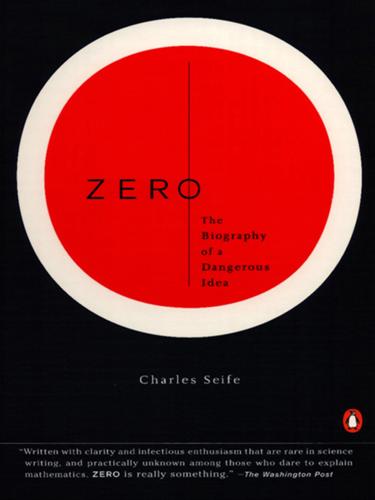
Zero: The Biography of a Dangerous Idea
by
Charles Seife
Published 31 Aug 2000
As you get into greatly curved regions of space, bodies’ masses effectively increase, a phenomenon known as mass inflation. This analogy explains the orbits of the planets; Earth is simply rolling around in the dimple that the sun makes in the rubber sheet. Light doesn’t go in a straight line, but in a curved path around stars—an effect that the British astronomer Sir Arthur Eddington went on an expedition in 1919 to observe. Eddington measured the position of a star during a solar eclipse and spotted the curvature that Einstein had predicted (Figure 51). Einstein’s equations also predicted something much more sinister: the black hole, a star so dense that nothing can escape its grasp, not even light.

Why Information Grows: The Evolution of Order, From Atoms to Economies
by
Cesar Hidalgo
Published 1 Jun 2015
It played in Pandora, and I thumbed up the song that night. 2 The Body of the Meaningless Suppose that we were asked to arrange the following into categories—distance, mass, electric force, entropy, beauty, melody. I think there are the strongest grounds for placing entropy alongside beauty and melody, and not with the first three. Entropy is only found when the parts are viewed in association, and it is by viewing or hearing the parts in association that beauty and melody are discerned. —ARTHUR EDDINGTON To invent, you need a good imagination and a pile of junk. —THOMAS A. EDISON A few months ago an article on the front page of a Chilean newspaper’s business section caught my eye. The article talked about a Chilean who had bought the world’s most expensive car. The car, a Bugatti Veyron, had a sticker price of more than $2.5 million, and its purchase represented one of the most flamboyant acts of conspicuous consumption I have ever seen.
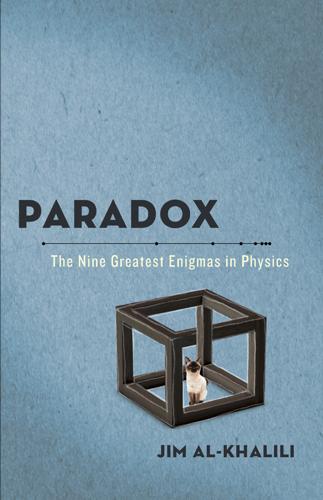
Paradox: The Nine Greatest Enigmas in Physics
by
Jim Al-Khalili
Published 22 Oct 2012
This definition applies not just to individual systems, but to the entire Universe. So you can see that if someone were to come up with a situation where entropy in an isolated system was dropping, then you could say that time itself must have switched directions—and that is too weird even to contemplate (in this chapter anyway!). Here is what the English astronomer Arthur Eddington had to say about the importance of the Second Law: The law that entropy always increases—the Second Law of Thermodynamics—holds, I think, the supreme position among the laws of Nature … If your theory is found to be against the Second Law of Thermodynamics I can give you no hope; there is nothing for it but to collapse in deepest humiliation.
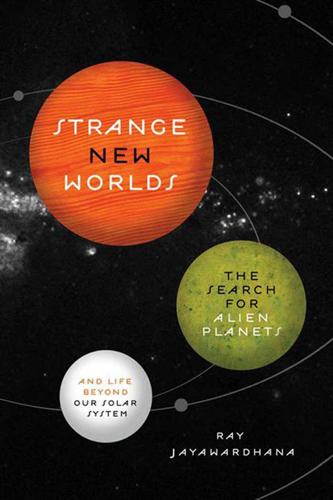
Strange New Worlds: The Search for Alien Planets and Life Beyond Our Solar System
by
Ray Jayawardhana
Published 3 Feb 2011
A total solar eclipse was to take place on May 29, 1919. Conveniently, it would occur in front of a rich cluster of stars known as the Hyades, offering an excellent opportunity to measure any defection of starlight by the Sun’s gravity. Less conveniently, the total eclipse could only be seen from the tropics. So the English astrophysicist Arthur Eddington mounted an expedition to the island of Principe, off the west coast of Africa, while another group set sail for Brazil. The idea was to compare photographs of the Hyades stars during the totality with those taken a few months earlier at night and measure any shifts in the stars’ positions relative to each other.

The Milky Way: An Autobiography of Our Galaxy
by
Moiya McTier
Published 14 Aug 2022
Radiation pressure, mostly from electromagnetic radiation in the form of photons, gets too strong at high masses. One of your human scientists figured this out without the help of hands-on experiments nearly a century ago, though he was more focused on the upper limit of a star’s luminosity, or brightness, rather than mass, but the two are closely related. His name was Arthur Eddington, dubbed “Sir” even though he never fought in any battle on principle. Since I’m compelled to destruction, I must respect his steadfastness. If you expect a 15 solar mass star to die the same way as a 100 solar mass star, then you clearly haven’t been paying attention. Mass differences matter!

From eternity to here: the quest for the ultimate theory of time
by
Sean M. Carroll
Published 15 Jan 2010
(The First Law states that energy is conserved.24) The Second Law is arguably the most dependable law in all of physics. If you were asked to predict what currently accepted principles of physics would still be considered inviolate a thousand years from now, the Second Law would be a good bet. Sir Arthur Eddington, a leading astrophysicist of the early twentieth century, put it emphatically: If someone points out to you that your pet theory of the universe is in disagreement with Maxwell’s equations [the laws of electricity and magnetism]—then so much the worse for Maxwell’s equations. If it is found to be contradicted by observation—well, these experimentalists do bungle things sometimes.
…
Adding anything else to the picture, either in space or in time—an oven, a baker, a previously existing pumpkin patch—only makes the scenario less likely, because the entropy would have to dip lower to make that happen. By far the easiest way to get a pumpkin pie in this context is for it to gradually fluctuate all by itself out of the surrounding chaos.186 Sir Arthur Eddington, in a lecture from 1931, considered a perfectly reasonable anthropic criterion: A universe containing mathematical physicists [under these assumptions] will at any assigned date be in the state of maximum disorganization which is not inconsistent with the existence of such creatures.187 Eddington presumes that what you really need to make a good universe is a mathematical physicist.
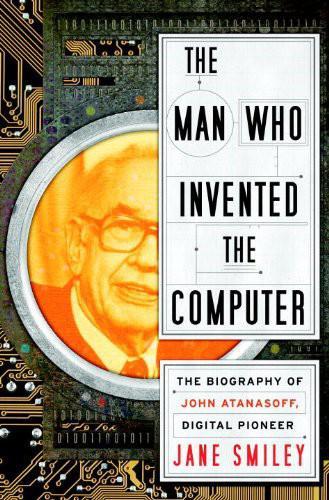
The Man Who Invented the Computer
by
Jane Smiley
Published 18 Oct 2010
If, at the University of Florida and Iowa State, and even at the University of Wisconsin, Atanasoff was always more or less at the periphery of both the mathematics and physics establishments, at King’s College Turing was at the exact heart, especially of mathematics. He took courses from astrophysicist Arthur Eddington and mathematicians G. H. Hardy and Max Born. He met John von Neumann there—many mathematicians fleeing conditions in Germany and the East passed through Cambridge on their way to settling elsewhere. And it was Max Newman, who was lecturing on topology—the study of relationships between geometric spaces as they are transformed by such operations as stretching, but not such operations as cutting—who introduced him to the Hilbert problem that would make his career.

First Light: Switching on Stars at the Dawn of Time
by
Emma Chapman
Published 23 Feb 2021
Payne-Gaposchkin persevered, however, enduring the wrath of one practical lab demonstrator who shouted at the women to take off their corsets as they would interfere with the electromagnetic experiments. It was in this context that she received a last-minute free ticket to attend a lecture by Arthur Eddington regarding his trip to Brazil to view the 1918 eclipse and verify the theory of relativity. Eddington’s lecture on relativity had a profound effect on Payne-Gaposchkin. The result was a complete transformation of my world picture. … When I returned to my room, I found I could write down the lecture word for word … For three nights, I think, I did not sleep.

Erwin Schrodinger and the Quantum Revolution
by
John Gribbin
Published 1 Mar 2012
The other physicists honoured alongside Schrödinger included Bohr, Debye, Millikan, Planck, and Rutherford—not exactly the “Young Turks” of physics at the time. Schrödinger’s research in Graz was also the kind of thing that Grand Old Men with established reputations, tenured posts, and guaranteed pensions indulge in. He became fascinated by the cosmological ideas of Arthur Eddington (1882–1944), a British Grand Old Man whose illustrious career had included explaining the general theory of relativity to the English-speaking world and testing Einstein’s theory by making observations of the stars during a solar eclipse in 1919. He was a great popularizer of science, and intrigued by the puzzle of how to reconcile the general theory with quantum mechanics.
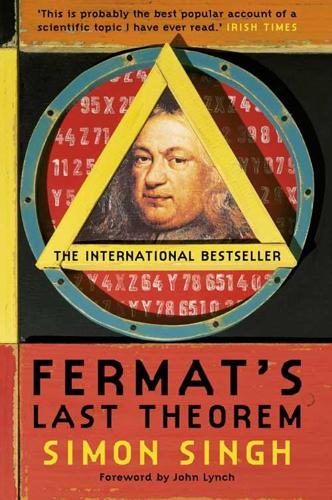
Fermat’s Last Theorem
by
Simon Singh
Published 1 Jan 1997
Wiles was not prepared to give up: finding a proof of the Last Theorem had turned from being a childhood fascination in to a fully fledged obsession. Having learnt all there was to learn about the mathematics of the nineteenth century, Wiles decided to arm himself with techniques of the twentieth century. 4 Into Abstraction Proof is an idol before which the mathematician tortures himself. Sir Arthur Eddington Following the work of Ernst Kummer, hopes of finding a proof for the Last Theorem seemed fainter than ever. Furthermore mathematics was beginning to move into different areas of study and there was a risk that the new generation of mathematicians would ignore what seemed an impossible dead-end problem.
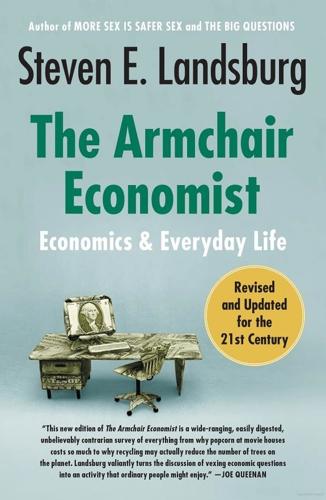
The Armchair Economist: Economics and Everyday Life
by
Steven E. Landsburg
Published 1 May 2012
The Economics of Scientific Method In 1915, Albert Einstein announced his general theory of relativity and some of its remarkable implications. The theory "predicted" an aberration in the orbit of Mercury that had been long observed but never explained. It also predicted something new and unexpected, concerning the way light is bent by the sun's gravitational field. In 1919, an expedition led by Sir Arthur Eddington confirmed the light-bending prediction and made Einstein an international celebrity. Both the explanation of Mercury's orbit and the successful prediction of light bending were spectacular confirmations of Einstein's theory. But only the light bending—because it was unexpected—made headlines.
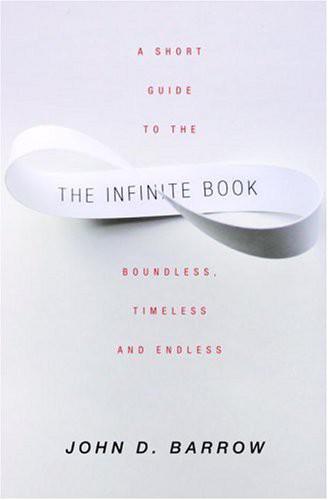
The Infinite Book: A Short Guide to the Boundless, Timeless and Endless
by
John D. Barrow
Published 1 Aug 2005
The monkeys turn up in 1909 in a version of the scenario written by the French mathematician Emile Borel in his book on probability, Élements de la théorie des probabilités (Paris, 1909), where he suggests that the randomly typing monkeys would eventually produce every book in France’s Bibliothèque Nationale. Arthur Eddington takes up the analogy in his book The Nature of the Physical World (Cambridge University Press, 1928), where he changes the library (p. 72): ‘If I let my fingers wander idly over the keys of a typewriter it might happen that my screed made an intelligible sentence. If an army of monkeys were strumming on typewriters they might write all the books in the British Museum.’
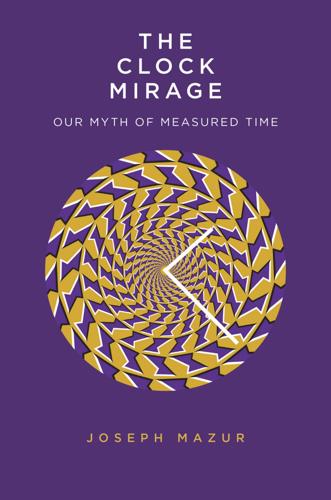
The Clock Mirage: Our Myth of Measured Time
by
Joseph Mazur
Published 20 Apr 2020
(TIME BEYOND THE OBSERVED) I was twelve years old when my father, an armchair philosopher, relayed a myth that there were only three people in the world who understood Einstein’s special theory of relativity. The myth was popularized by an unsubstantiated rumor that the renowned early twentieth-century English physicist Sir Arthur Eddington quipped, “Who’s the third?” At twelve, I took my father’s words to be sacred truth. I believed everything he said. I still cannot wear socks to bed because he once professed that feet need to breathe at night and that socks prevented feet from breathing. Perhaps that’s why I started my first year of teaching a course on mathematical physics to undergraduates using material from Einstein’s 1905 paper “Zur Elektrodynamik bewegter Körper” (On the electrodynamics of moving bodies).1 It was in defiance of my father, and bravely naive for a newly appointed professor of mathematics.
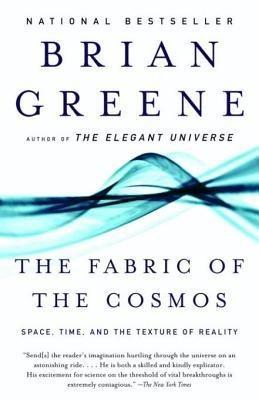
The Fabric of the Cosmos
by
Brian Greene
Published 1 Jan 2003
To some extent, this is true. But even when it comes to the everyday, we are far from a full understanding. And among the features of common experience that have resisted complete explanation is one that taps into one of the deepest unresolved mysteries in modern physics—the mystery that the great British physicist Sir Arthur Eddington called the arrow of time.4 We take for granted that there is a direction to the way things unfold in time. Eggs break, but they don’t unbreak; candles melt, but they don’t unmelt; memories are of the past, never of the future; people age, but they don’t unage. These asymmetries govern our lives; the distinction between forward and backward in time is a prevailing element of experiential reality.
…
Lord Kelvin was quoted by the physicist Albert Michelson during his 1894 address at the dedication of the University of Chicago’s Ryerson Laboratory (see D. Kleppner, Physics Today, November 1998). 2. Lord Kelvin, “Nineteenth Century Clouds over the Dynamical Theory of Heat and Light,” Phil. Mag. Ii—6th series, 1 (1901). 3. A. Einstein, N. Rosen, and B. Podolsky, Phys. Rev. 47, 777 (1935). 4. Sir Arthur Eddington, The Nature of the Physical World (Cambridge, Eng.: Cambridge University Press, 1928). 5. As described more fully in note 2 of Chapter 6, this is an overstatement because there are examples, involving relatively esoteric particles (such as K-mesons and B-mesons), which show that the so-called weak nuclear force does not treat past and future fully symmetrically.
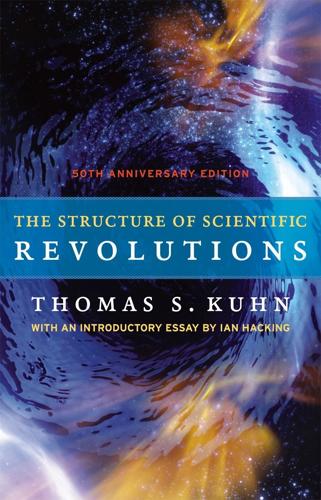
The Structure of Scientific Revolutions
by
Thomas S. Kuhn
and
Ian Hacking
Published 1 Jan 1962
Einstein’s special (1905) and then general (1916) theory of relativity were more shattering events than we can well conceive. Relativity had, at the beginning, far more repercussions in the humanities and arts than genuine testable consequences in physics. Yes, there was the famous expedition of Sir Arthur Eddington to test an astronomical prediction of the theory, but it was only later that relativity became integral to many branches of physics. Then there was the quantum revolution, also a two-stage affair, with Max Planck’s introduction of quanta around 1900 and then the full quantum theory of 1926–27, complete with Heisenberg’s uncertainty principle.
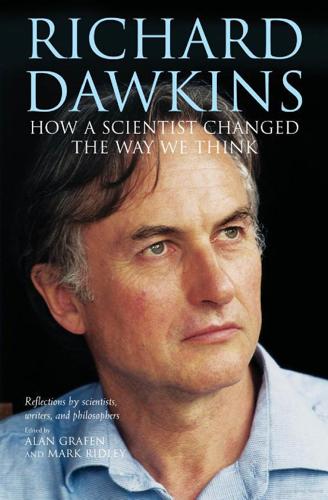
Richard Dawkins: How a Scientist Changed the Way We Think
by
Alan Grafen; Mark Ridley
Published 1 Jan 2006
ENDNOTES 1 I thank Latha Menon for bringing this quotation to my attention. 2 William Paley, Natural Theology (1803). WRITING Richard Dawkins and the golden pen Matt Ridley BEFORE The Selfish Gene, scientists wrote books for each other, or for laymen, but rarely for both. The great interpreters of science, such as Peter Medawar, J. B. S. Haldane, or Arthur Eddington might write with fluency, wit, and verve, but they were still more inclined to explain established ideas than to explore new mysteries. Gracefully and graciously they gave you the answer rather than the argument. More than anybody before him, Richard Dawkins thought that if he was to persuade his fellow scientists of a new truth that seemed to him ‘stranger than fiction’ he might as well try to enlighten the rest of us while he was at it.
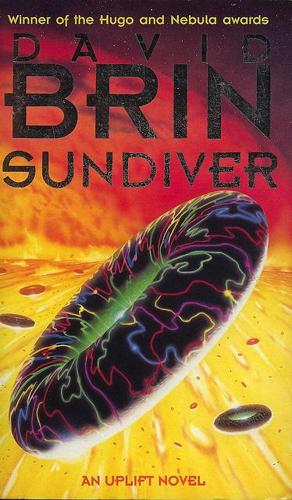
Sundiver
by
David Brin
Published 15 Jan 1995
Icarus soared upwards to the sun till the wax melted which bound his wings and his flight ended in fiasco.. .. The classical authorities tell us, of course, that he was only ‘doing a stunt’; but I prefer to think of him as the man who brought to light a serious constructional defect in the flying-machines of his day. From Stars and Atoms, by Sir Arthur Eddington (Oxford University Press, 1927, p. 41) 23. AN EXCITED STATE Pierre LaRoque sat with his back to the utility dome. He hugged his knees and stared vacantly at the deck. He wondered, miserably, if Millie would give him a shot to last him until the Sunship got out of the chromosphere. Unfortunately, that wouldn’t be in keeping with his new role as a prophet.

Origin Story: A Big History of Everything
by
David Christian
Published 21 May 2018
That’s why the modern story of their life and death could not have been told by naked-eye astronomers such as the Maya or the people of Lake Mungo or ancient Athens. Our modern understanding is based on research from all over the world using instruments and data stores created only in the past two centuries. These allow modern astronomers to share information on millions of stars at different stages in their lives. As the English astronomer Arthur Eddington put it, astronomy is like walking through a forest with saplings, mature trees, and ancients close to death.3 By studying trees at different points in their life cycles, you can eventually figure out how they grow, mature, and die. For astronomers, there is one fundamental map that brings together a huge amount of information about stars: the Hertzsprung-Russell diagram.
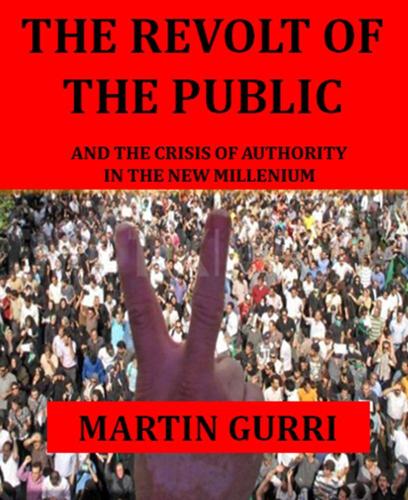
The Revolt of the Public and the Crisis of Authority in the New Millennium
by
Martin Gurri
Published 13 Nov 2018
The truly interesting question, on the other hand, is how to explain the crisis of authority and the erratic behavior of the institutions, if there were no conspiracies to account for them. If Science Is the Modern Deity, Then the Public Is on the Verge of Deicide The epochal moment for the prestige of modern science among the public came on November 6, 1919, when the Royal Society, meeting in Piccadilly, London, announced the findings of Arthur Eddington’s expedition to the island of Principe and the city of Sobral in northern Brazil. At stake was the very shape of the universe. Eddington, head of the Cambridge Observatory, had measured the gravitational curvature of light during the solar eclipse of May 29. The Newtonian universe, with its notions of absolute space, predicted a curvature of 0.87 arc-seconds.

The Clockwork Universe: Saac Newto, Royal Society, and the Birth of the Modern WorldI
by
Edward Dolnick
Published 8 Feb 2011
But in physics a mystique of impenetrability only adds to a theory’s allure. In 1919, when the New York Times ran a story on Einstein and relativity, a subheadline declared, “A Book for 12 Wise Men.” A smaller headline added, “No More in All the World Could Comprehend It.” A few years later a journalist asked the astronomer Arthur Eddington if it was true that only three people in the world understood general relativity. Eddington thought a moment and then replied, “I’m trying to think who the third person is.” Two features, beyond the difficulty of its mathematical arguments, made the Principia so hard to grasp. The first reflected Newton’s hybrid status as part medieval genius, part modern scientist.
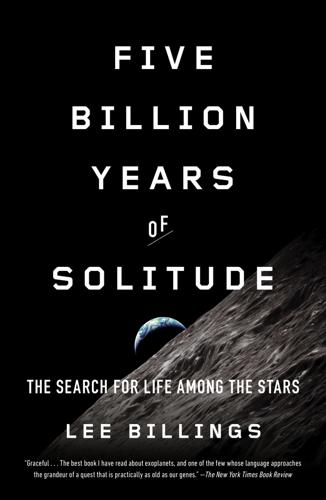
Five Billion Years of Solitude: The Search for Life Among the Stars
by
Lee Billings
Published 2 Oct 2013
Drake had found a way to transform the Sun itself into the ultimate telescope. A consequence of the Sun’s immense mass is that it acts as a star-size “gravitational lens,” bending and amplifying light that grazes its surface. This effect, first measured during a solar eclipse in 1919 by the astronomer Arthur Eddington, was one of the key pieces of evidence that validated Einstein’s theory of general relativity. Simple math and physics, judiciously applied, show that our star bends light into a narrow beam aligned with the center of the Sun and the center of any far-distant light source. As first calculated by the Stanford radio astronomer Von Eshleman in 1979, the beam comes into focus at a point beginning some 82 billion kilometers (51 billion miles) away from the Sun, nearly fourteen times farther out than the orbit of Pluto, and extends outward into infinity.
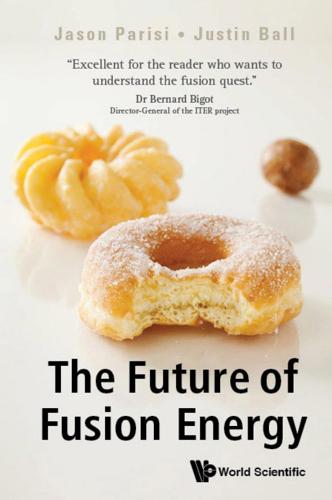
The Future of Fusion Energy
by
Jason Parisi
and
Justin Ball
Published 18 Dec 2018
The next ingredient was a stupendously brilliant discovery by Francis William Aston, an English physicist and chemist. As is often the case in science, this discovery was serendipitous. While Aston was looking for isotopes of neon, he noticed that four hydrogen-1 nuclei were somewhat heavier than a single helium-4 nucleus. In 1920, the prominent English astrophysicist Sir Arthur Eddington put two and two together3 and hypothesized that this could be the origin of the Sun’s energy production. If all of the hydrogen in the Sun were converted into helium, the energy of the extra mass, according to E = mc2, could support the Sun for around 100 billion years. Suddenly, the estimate of the lifetime of the Sun had increased from thousands of years to one hundred billion years.4 Now that the basic mechanism for stellar energy production had been identified, physicists set to work calculating exactly which isotopes could be fused and how much energy they released.

Why the West Rules--For Now: The Patterns of History, and What They Reveal About the Future
by
Ian Morris
Published 11 Oct 2010
Relativity implies that gravity bends light, meaning—if the theory is right—that every time the sun passes between Earth and another star, the sun’s gravity will bend the light coming from that star, making the star appear to shift position slightly. That provides an easy test of the theory—except for the fact that the sun is so bright that we cannot see stars near it. But in 1919 the British astronomer Arthur Eddington came up with a clever solution, very much in the spirit of Einstein’s aphorism: by looking at the stars near the sun during a solar eclipse, Eddington realized, he could measure whether they had shifted by the amount Einstein predicted. Eddington set off to the South Pacific, made his observations, and pronounced Einstein correct.
…
The strongest claim I have seen is on the One Degree website (http://www.onedegree.ca/2005/04/08/making-einstein-simple), suggesting that the phrase actually comes from a Reader’s Digest summary of the general theory of relativity. Perhaps it was the most important thing Einstein never said (but should have). 145 “I’m just wondering”: Arthur Eddington, quoted in Isaacson 2007, p. 262. 146 Norway and Sierra Leone scores: United Nations Development Programme 2009, Table H, pp. 171, 174 (available at http://hdr.undp.org/en/). 148 E x T → C: L. White 1949, p. 368. 149 “Every Communist”: taken from Mao Zedong’s essay “On Protracted War,” written in May 1937, quoted in Short 1999, p. 368. 151 “because no”: Naroll 1956, p. 691. 157 “conjectures and refutations”: Popper 1963, p. 43. 157 “There could be”: Albert Einstein, quoted in ibid., p. 42. 163 “There are three”: attributed to Benjamin Disraeli by Mark Twain (Twain 1924, p. 246). 170 “Are these” etc.: Charles Dickens, A Christmas Carol in Prose (1843), stave 4. 4.
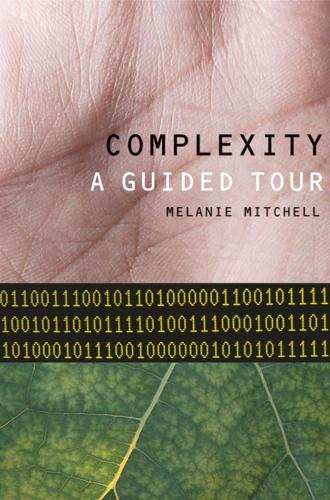
Complexity: A Guided Tour
by
Melanie Mitchell
Published 31 Mar 2009
CHAPTER 3 Information The law that entropy increases—the Second Law of Thermodynamics—holds, I think, the supreme position among the laws of Nature… [I] f your theory is found to be against the Second Law of Thermodynamics I can give you no hope; there is nothing for it but to collapse in deepest humiliation. —Sir Arthur Eddington, The Nature of the Physical World COMPLEX SYSTEMS ARE OFTEN said to be “self-organizing”: consider, for example, the strong, structured bridges made by army ants; the synchronous flashing of fireflies; the mutually sustaining markets of an economy; and the development of specialized organs by stem cells—all are examples of self-organization.
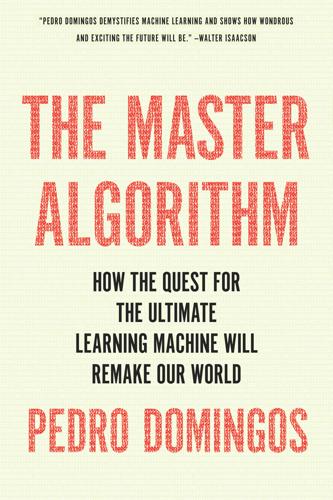
The Master Algorithm: How the Quest for the Ultimate Learning Machine Will Remake Our World
by
Pedro Domingos
Published 21 Sep 2015
This is just the scientific method applied to machine learning: it’s not enough for a new theory to explain past evidence because it’s easy to concoct a theory that does that; the theory must also make new predictions, and you only accept it after they’ve been experimentally verified. (And even then only provisionally, because future evidence could still falsify it.) Einstein’s general relativity was only widely accepted once Arthur Eddington empirically confirmed its prediction that the sun bends the light of distant stars. But you don’t need to wait around for new data to arrive to decide whether you can trust your learner. Rather, you take the data you have and randomly divide it into a training set, which you give to the learner, and a test set, which you hide from it and use to verify its accuracy.

Black Box Thinking: Why Most People Never Learn From Their Mistakes--But Some Do
by
Matthew Syed
Published 3 Nov 2015
For if Aristotle was wrong, scientists were handed the impetus to figure out why and come up with new theories that, in turn, could be subjected to future falsification. This is, at least in part, how science progresses.* The same idea can be seen in relation to Einstein’s theory of relativity. In 1919 a British scientist named Arthur Eddington traveled to Africa to test one of relativity’s most novel claims: that light is attracted to heavy bodies. During an eclipse he took photographs of a distant star to see if he could detect the influence of gravity on the light rays coming toward Earth. Eddington’s experiment corroborated the theory.4 But the key point is that it might not have.

Space Chronicles: Facing the Ultimate Frontier
by
Neil Degrasse Tyson
and
Avis Lang
Published 27 Feb 2012
The classic authorities tell us, of course, that he was only “doing a stunt”; but I prefer to think of him as the man who certainly brought to light a serious constructional defect in the flying-machines of his day [and] we may at least hope to learn from his journey some hints to build a better machine. —SIR ARTHUR EDDINGTON, Stars & Atoms (1927) For millennia, the idea of being able to fly occupied human dreams and fantasies. Waddling around on Earth’s surface as majestic birds flew overhead, perhaps we developed a form of wing envy. One might even call it wing worship. You needn’t look far for evidence. For most of the history of broadcast television in America, when a station signed off for the night, it didn’t show somebody walking erect and bidding farewell; instead it would play the “Star Spangled Banner” and show things that fly, such as birds soaring or Air Force jets whooshing by.
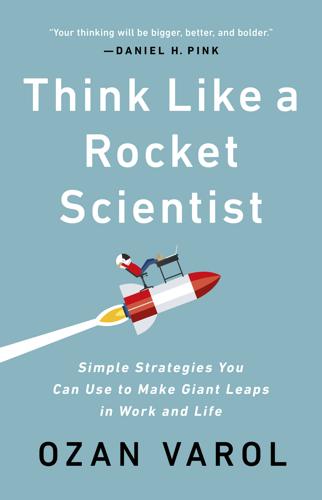
Think Like a Rocket Scientist: Simple Strategies You Can Use to Make Giant Leaps in Work and Life
by
Ozan Varol
Published 13 Apr 2020
But it’s far better to be uncomfortably uncertain than comfortably wrong. In the end, it’s the confused apes—the connoisseurs of uncertainty—that transform the world. Connoisseurs of Uncertainty “Something unknown is doing we don’t know what—that is what our theory amounts to.”22 This is how the astrophysicist Arthur Eddington described the state of quantum theory in 1929. He may as well have been speaking about our understanding of the entire universe. Astronomers live and work in a dark mansion that’s only 5 percent lit. Roughly 95 percent of the universe is made up of ominous-sounding stuff called dark matter and dark energy.23 They don’t interact with light, so we can’t see or otherwise detect them.
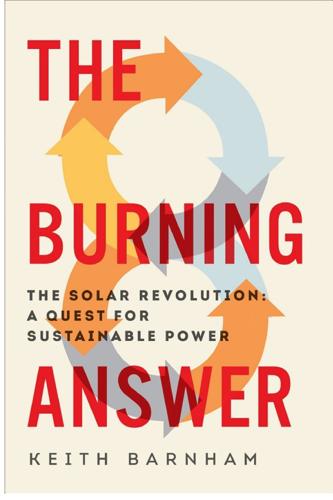
The Burning Answer: The Solar Revolution: A Quest for Sustainable Power
by
Keith Barnham
Published 7 May 2015
Before we consider ways to reduce these, we should try to answer the responses that governments are likely to make to a call for a moratorium on all forms of electricity generation apart from the renewables. TEN The Politics of the Solar Revolution Science is one thing, wisdom is another. Arthur Eddington This chapter will consider two burning questions that have been smouldering throughout The Burning Answer. Why is the solar revolution developing at very different speeds in different countries? What can we do to speed up the revolution in the countries lagging behind? We have seen that Britain is way behind Germany in introducing solar technologies, so I will focus mainly on these two countries and the political and technical factors that have given Germany its lead.

When Einstein Walked With Gödel: Excursions to the Edge of Thought
by
Jim Holt
Published 14 May 2018
Probably not. Like Einstein himself, we are stubbornly in thrall to our temporal illusions. We cannot help feeling ourselves to be slaves to one part of the timescape (the past) and hostages to another part (the future). Nor can we help feeling that we are quite literally running out of time. Arthur Eddington, one of the first physicists to grasp Einstein’s relativity theory, declared that our intuitive sense of time’s passage is so powerful that it must correspond to something in the objective world. If science cannot get a purchase on it, one might say, well, so much the worse for science! What science can tell us something about is the psychology of time’s passage.
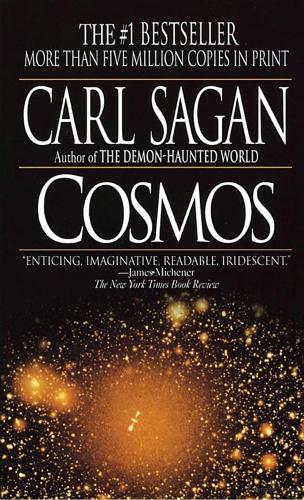
Cosmos
by
Carl Sagan
Published 1 Jan 1980
.* Nevertheless, most of the mass of an atom is in its nucleus; the electrons are by comparison just clouds of moving fluff. Atoms are mainly empty space. Matter is composed chiefly of nothing. I am made of atoms. My elbow, which is resting on the table before me, is made of atoms. The table is made of atoms. But if atoms are so small and empty and the nuclei smaller still, why does the table hold me up? Why, as Arthur Eddington liked to ask, do the nuclei that comprise my elbow not slide effortlessly through the nuclei that comprise the table? Why don’t I wind up on the floor? Or fall straight through the Earth? The answer is the electron cloud. The outside of an atom in my elbow has a negative electrical charge. So does every atom in the table.

A Dominant Character
by
Samanth Subramanian
Published 27 Apr 2020
Like Wells, he was a man who peered constantly into the future and relayed his visions of what the world looked like. But unlike Wells, he did so as a professional scientist with a loud political voice. In the business of explaining science, Haldane had peers: the physicist James Jeans wrote popular books on cosmology, and the astronomer Arthur Eddington lectured on relativity and its bearing on religious faith. But no one ventured to tie together the ongoing developments in both science and politics the way Haldane did. No one laid out quite as clearly or prolifically how science could solve the immediate problems that people faced. The letters poured in—hundreds a week, his secretary reckoned.
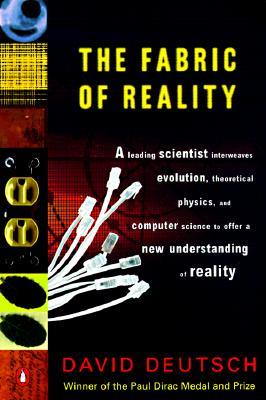
The Fabric of Reality
by
David Deutsch
Published 31 Mar 2012
For instance, it correctly predicted that every year the planet Mercury would drift by about one ten-thousandth of a degree away from where Newton's theory said it should be. It also implied that starlight passing close to the Sun would be deflected twice as much by gravity as Newton's theory would predict. The observation of this deflection by Arthur Eddington in 1919 is often deemed to mark the moment at which the Newtonian world-view ceased to be rationally tenable. (Ironically, modern reappraisals of the accuracy of Eddington's experiment suggest that this may have been premature.) The experiment, which has since been repeated with great accuracy, involved measuring the positions of spots (the images of stars close to the limb of the Sun during an eclipse) on a photographic plate.

The Greatest Show on Earth: The Evidence for Evolution
by
Richard Dawkins
Published 21 Sep 2009
In every link of the food chain, and through every trickle-down cascade within every cell, some of the energy is degraded to uselessness. Perpetual motion machines are . . . all right, that’s enough repetition, but I won’t apologize for quoting, as I have done in at least one previous book, the marvellous saying of Sir Arthur Eddington on the subject: If someone points out to you that your pet theory of the universe is in disagreement with Maxwell’s equations – then so much the worse for Maxwell’s equations. If it is found to be contradicted by observation – well, these experimentalists do bungle things sometimes. But if your theory is found to be against the second law of thermodynamics I can give you no hope; there is nothing for it but to collapse in deepest humiliation.
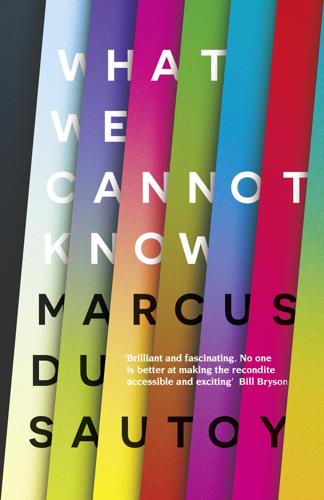
What We Cannot Know: Explorations at the Edge of Knowledge
by
Marcus Du Sautoy
Published 18 May 2016
So Einstein’s theory predicted that light would be bent by the presence of a large mass. It was a highly unexpected prediction of the theory, but one that could be tested: a perfect scenario for a scientific theory. Convincing evidence for this picture of a curved space-time was provided by the British astronomer Arthur Eddington’s observations of light from distant stars recorded during the solar eclipse of 1919. The theory predicted that the light from distant stars would be bent by the gravitational effect of the Sun. Eddington needed the eclipse to block out the glare of the Sun so that he could see the stars in the sky.
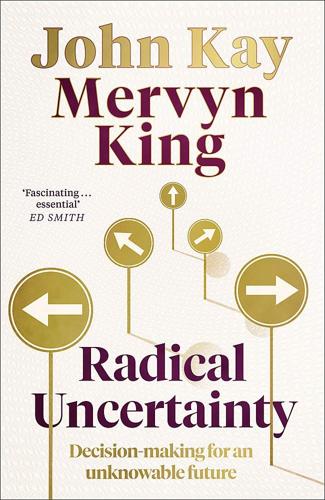
Radical Uncertainty: Decision-Making for an Unknowable Future
by
Mervyn King
and
John Kay
Published 5 Mar 2020
Friedman’s article appeared in a brief period of intellectual history in which a version of Popperian falsificationism – the idea that a hypothesis acquires scientific status only if there is a possibility that it might be refuted – was in fashion. Falsificationism enjoyed its moment in (or rather out of) the sun in May 1919, when an experiment devised by Frank Dyson was conducted by fellow British astronomer Arthur Eddington on the island of Príncipe off West Africa during a total solar eclipse. Eddington established that Einstein’s theory of relativity correctly predicted the path of light and Newton’s view of gravitational fields did not. Einstein became an international celebrity, and two years later received the Nobel Prize in Physics. 22 But even in physics such conclusive tests are rare.

Coming of Age in the Milky Way
by
Timothy Ferris
Published 30 Jun 1988
O’Neill. Elementary Particle Physics. Reading, Mass.: Addison-Wesley, 1979. Graduate-level textbook. Child, J.M. The Geometrical Lectures of Isaac Barrow. Chicago: Open Court, 1916. Choquet-Bruhat, Y., and T.M. Karade. On Relativity Theory. Singapore: World Scientific, 1984. Proceedings of an Arthur Eddington centenary symposium. Christianson, Gale E. In the Presence of the Creator: Isaac Newton and His Times. New York: Free Press, 1984. Cicero. De Fato, trans. H. Rackham. Cambridge, Mass.: Harvard University Press, 1982. Timeless critique of philosophical issues in cosmology. —————. The Nature of the Gods, trans.

Adaptive Markets: Financial Evolution at the Speed of Thought
by
Andrew W. Lo
Published 3 Apr 2017
It is the least adapted individuals that in every generation are eliminated first, while those that are better adapted have a greater chance to survive and reproduce.”6 If this process sounds like trial and error, that’s because it is. The surprising fact is how powerful a force of change trial and error can be. Consider a slight variation on the thought experiment first proposed by the astrophysicist Arthur Eddington in 1928: “If an army of monkeys were strumming on typewriters they might write all the books in the British Museum.”7 Let’s simplify this a bit: how long would it take for a single monkey pounding on a keyboard to type the entire text of Shakespeare’s play Hamlet? Intuitively we know it would take a vast amount of time for this to happen, much longer than a typical monkey’s lifespan.

The Man Who Knew Infinity: A Life of the Genius Ramanujan
by
Robert Kanigel
Published 25 Apr 2016
They marched in a procession from Widener Library and took their places on stands erected in front of the pillars of Memorial Church at the yard’s north end. Psychoanalyst Carl Jung was among them. So was Jean Piaget, the pioneer student of child development. So was English astrophysicist Sir Arthur Eddington. So was Hardy. The citation honoring him, slipped within the red leather presentation book stamped with Harvard’s Veritas seal, called him “a British mathematician who has led the advance to heights deemed inaccessible by previous generations.” During his stay at Harvard, Hardy was put up at the house of a prominent lawyer, who later became a United States senator.

A Short History of Nearly Everything
by
Bill Bryson
Published 5 May 2003
There was no such book, no such publisher, no such circle of learned men, but the notion stuck anyway. Soon the number of people who could grasp relativity had been reduced even further in the popular imagination—and the scientific establishment, it must be said, did little to disturb the myth. When a journalist asked the British astronomer Sir Arthur Eddington if it was true that he was one of only three people in the world who could understand Einstein's relativity theories, Eddington considered deeply for a moment and replied: “I am trying to think who the third person is.” In fact, the problem with relativity wasn't that it involved a lot of differential equations, Lorentz transformations, and other complicated mathematics (though it did—even Einstein needed help with some of it), but that it was just so thoroughly nonintuitive.

Genius: The Life and Science of Richard Feynman
by
James Gleick
Published 1 Jan 1992
“Time’s arrow” was already the catchphrase for this directionality, so evident to common experience, yet so invisible in the equations of physicists. There, in the equations, the road from past to future looked identical to the road from future to past. “There is no signboard to indicate that it is a one-way street,” complained Arthur Eddington. The paradox had been there all along, since Newton at least, but relativity had highlighted it. The mathematician Hermann Minkowski, by visualizing time as a fourth dimension, had begun to reduce past-future to the status of any pair of directions: left-right, up-down, back-front. The physicist drawing his diagrams obtains a God’s-eye view.
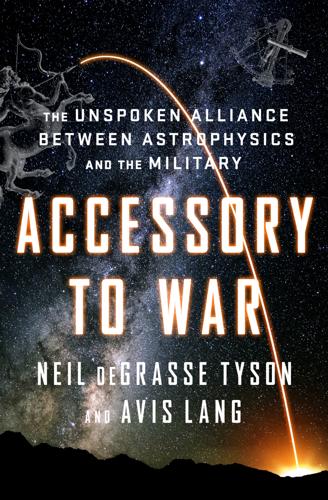
Accessory to War: The Unspoken Alliance Between Astrophysics and the Military
by
Neil Degrasse Tyson
and
Avis Lang
Published 10 Sep 2018
Research into radioactivity—the natural transmutation of elements—led to strong suspicions that some kind of natural nuclear process lurked behind it all, perhaps the same nuclear process that liberated sufficient energy to keep the stars shining. In 1920, with the carnage of the Great War freshly ended, the English astrophysicist Sir Arthur Eddington offered prescient reflections on the source of stellar energy at a meeting of the British Association for the Advancement of Science: A star is drawing on some vast reservoir of energy by means unknown to us. This reservoir can scarcely be other than the subatomic energy which, it is known, exists abundantly in all matter; we sometimes dream that man will one day learn how to release it and use it for his service.

Enlightenment Now: The Case for Reason, Science, Humanism, and Progress
by
Steven Pinker
Published 13 Feb 2018
The Law of Entropy is widely acknowledged in everyday life in sayings such as “Things fall apart,” “Rust never sleeps,” “Shit happens,” “Whatever can go wrong will go wrong,” and (from the Texas lawmaker Sam Rayburn) “Any jackass can kick down a barn, but it takes a carpenter to build one.” Scientists appreciate that the Second Law is far more than an explanation of everyday nuisances. It is a foundation of our understanding of the universe and our place in it. In 1928 the physicist Arthur Eddington wrote: The law that entropy always increases . . . holds, I think, the supreme position among the laws of Nature. If someone points out to you that your pet theory of the universe is in disagreement with Maxwell’s equations—then so much the worse for Maxwell’s equations. If it is found to be contradicted by observation—well, these experimentalists do bungle things sometimes.
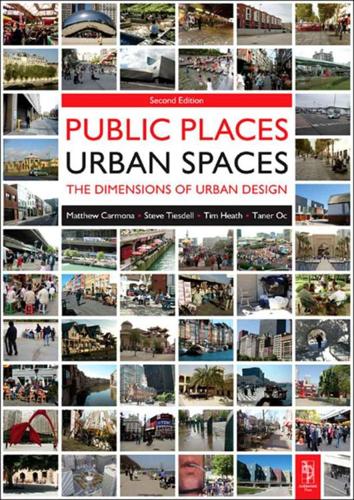
Public Places, Urban Spaces: The Dimensions of Urban Design
by
Matthew Carmona
,
Tim Heath
,
Steve Tiesdell
and
Taner Oc
Published 15 Feb 2010
The March of Time As well as the repetitive rhythms of time, a second way in which we know that time has passed is through evidence of progressive and irreversible change. In a very real sense, the past is fixed and the future open. While we may yearn to turn back the clock, to return to the city we knew as a child, or to relive a wonderful moment, we are unable to do so. This is the relentless ‘march of time’ or – in the astrophysicist Arthur Eddington’s (1927, from Coveney & Highfield 1990) evocative term – the ‘arrow of time’. The immediate kinaesthetic experience of urban space was discussed in Chapter 7. The long-term experience and passage of time within places will be discussed here. Urban environments are continuously and inexorably changing.
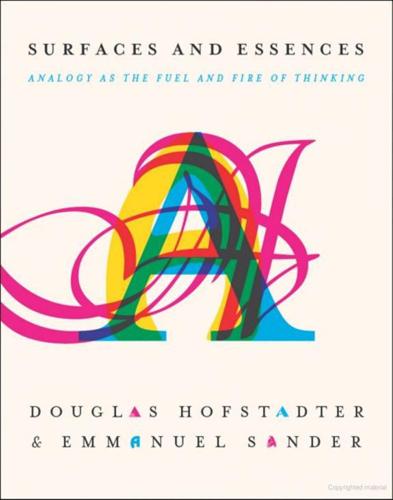
Surfaces and Essences
by
Douglas Hofstadter
and
Emmanuel Sander
Published 10 Sep 2012
The German astronomer Erwin Finlay-Freundlich carefully examined many hundreds of photos of solar eclipses to find evidence of the minuscule effect, but found none. In fact it turned out to be necessary to wait twelve years longer, until 1919, for the confirmation of this prediction during a total eclipse observed by an English team led by the physicist Arthur Eddington from two islands in the south Atlantic Ocean. The global effect of Eddington’s team’s confirmation was phenomenal. Not only did Einstein’s prediction hit the bull’s-eye, but the world, just emerging from under the dark pall cast by the “Great War”, was thrilled that an English team had confirmed a fantastic prediction made by an “enemy” scientist (even if Einstein had renounced his German citizenship and become Swiss in order to distance himself from German militarism); indeed, many people saw Eddington’s confirmation of Einstein’s prediction as a moment of great glory for humanity as a whole.
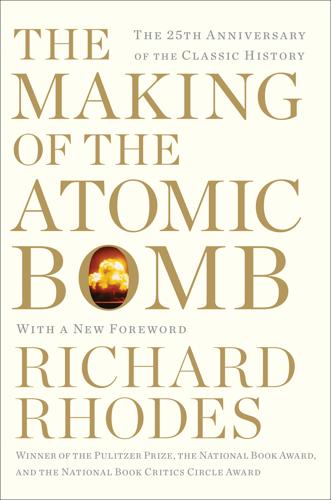
The Making of the Atomic Bomb
by
Richard Rhodes
Published 17 Sep 2012
He was full of brilliant ideas.1447 Houtermans had taken a Ph.D. in experimental physics at Göttingen but was strong in theory. One of his brilliant ideas, developed in the late 1920s at the University of Berlin with a visiting British astronomer, Robert Atkinson, concerned the production of energy in stars. Atkinson was familiar with recent estimates by his older colleague Arthur Eddington that the sun and other stars burn at temperatures of 10 million and more degrees and have life spans of billions of years—a prodigious and unexplained expenditure of energy. On a walking tour near Göttingen in the summer of 1927 the two men had wondered if nuclear transformations of the sort Rutherford was producing at the Cavendish might account for the enduring stellar fires.

Rationality: From AI to Zombies
by
Eliezer Yudkowsky
Published 11 Mar 2015
Isn’t it just obviously better for everyone? Well, you can try, if that is your whim. You can even shut your eyes and pretend the car is moving. But to really arrive at accurate beliefs requires evidence-fuel, and the further you want to go, the more fuel you need. * 24 Einstein’s Arrogance In 1919, Sir Arthur Eddington led expeditions to Brazil and to the island of Principe, aiming to observe solar eclipses and thereby test an experimental prediction of Einstein’s novel theory of General Relativity. A journalist asked Einstein what he would do if Eddington’s observations failed to match his theory. Einstein famously replied: “Then I would feel sorry for the good Lord.